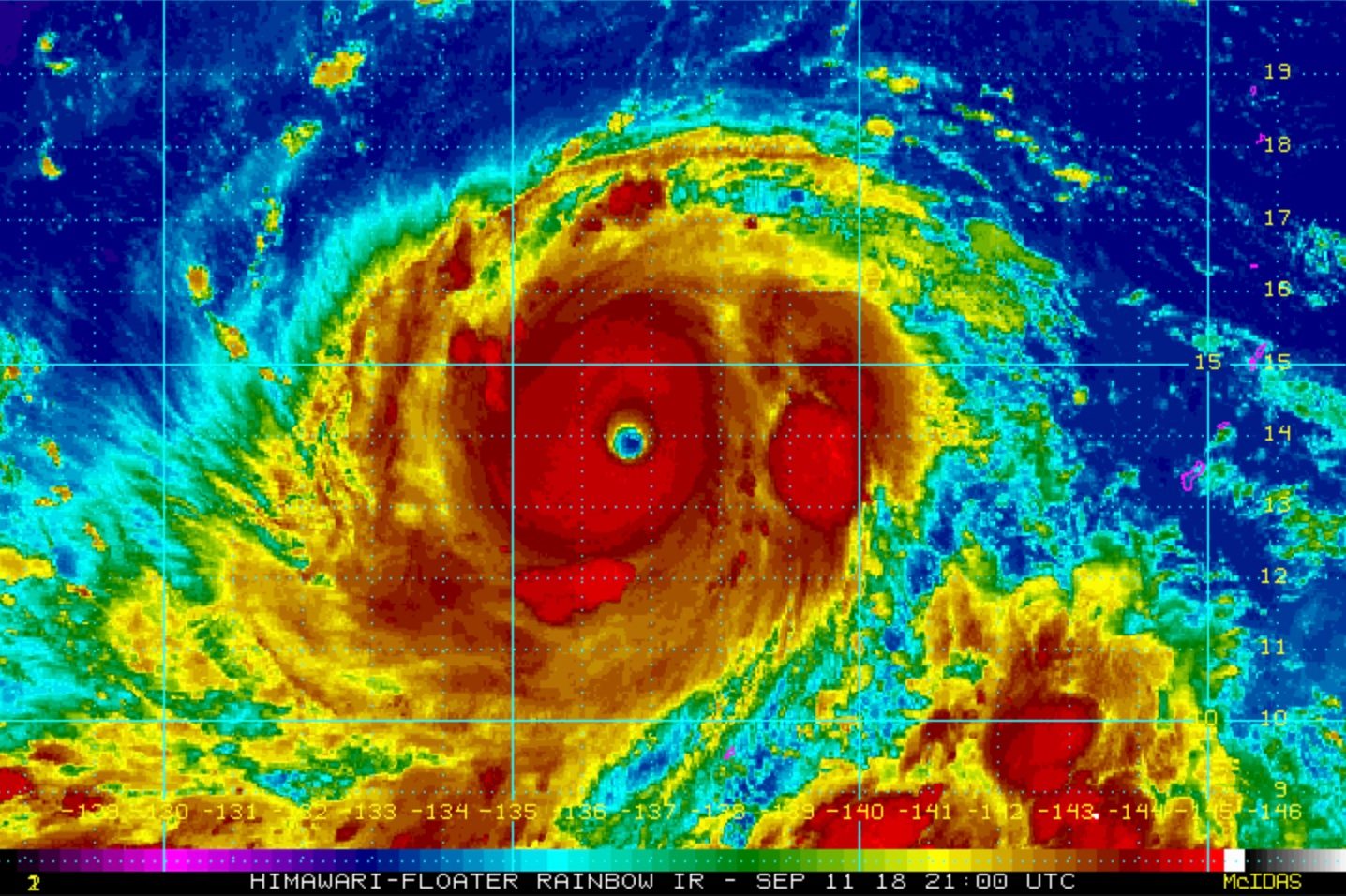SUMMARY
This is AI generated summarization, which may have errors. For context, always refer to the full article.

What’s the weather like in your area? Report the situation through Rappler’s Agos or tweet us at @rapplerdotcom.
MANILA, Philippines – Typhoon Mangkhut strengthened even more before dawn on Wednesday, September 12, ahead of its entry into the Philippine Area of Responsibility (PAR).
In a Facebook Live video past 5 am on Wednesday, the Philippine Atmospheric, Geophysical, and Astronomical Services Administration (PAGASA) said Mangkhut now has maximum winds of 200 kilometers per hour (km/h) from the previous 185 km/h and gustiness of up to 245 km/h from the previous 225 km/h.
Mangkhut is already 1,390 kilometers east of Southern Luzon, moving west at a slower 20 km/h from the previous 30 km/h.
Since it remains over water, it might still strengthen into a super typhoon, the strongest tropical cyclone category. (READ: FAST FACTS: Tropical cyclones, rainfall advisories)
Mangkhut is expected to enter PAR on Wednesday morning or afternoon. When it does, it would be given the local name Ompong, becoming the Philippines’ 15th tropical cyclone for 2018. The country usually gets an average of 20 tropical cyclones per year. (READ: LIST: PAGASA’s names for tropical cyclones in 2018)
PAGASA said the typhoon is threatening Northern Luzon and may cross the Cagayan-Batanes area on Saturday, September 15.
Signal No. 1 could be raised in some areas as early as Wednesday evening.
The state weather bureau on Monday afternoon, September 10, advised residents to already prepare for Mangkhut or the potential Ompong.
The typhoon might also enhance the southwest monsoon or hanging habagat, which is bringing light to heavy rain to Palawan, Western Visayas, and the Zamboanga Peninsula.
Residents of areas affected by the southwest monsoon should be on alert for flash floods and landslides, too.
PAGASA declared the start of the rainy season last June 8. – Rappler.com
Add a comment
How does this make you feel?
There are no comments yet. Add your comment to start the conversation.